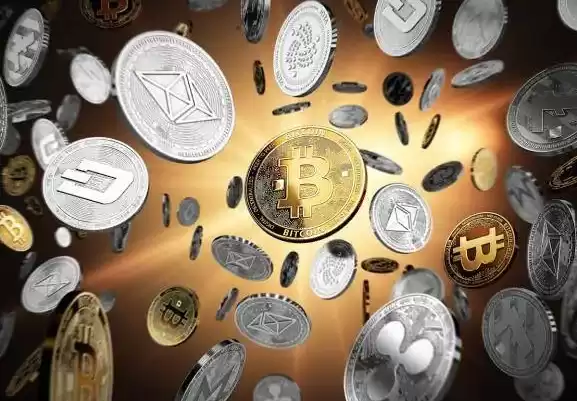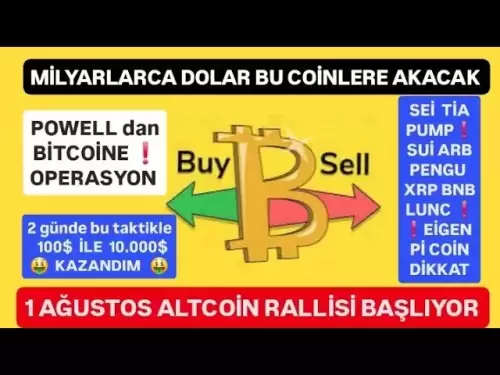-
 Bitcoin
Bitcoin $118600
0.36% -
 Ethereum
Ethereum $3855
1.06% -
 XRP
XRP $3.195
-0.09% -
 Tether USDt
Tether USDt $1.000
-0.04% -
 BNB
BNB $844.5
6.23% -
 Solana
Solana $191.3
2.83% -
 USDC
USDC $0.9997
-0.01% -
 Dogecoin
Dogecoin $0.2376
0.10% -
 TRON
TRON $0.3242
0.83% -
 Cardano
Cardano $0.8222
0.13% -
 Hyperliquid
Hyperliquid $45.26
6.53% -
 Sui
Sui $4.200
-2.56% -
 Stellar
Stellar $0.4336
-1.24% -
 Chainlink
Chainlink $18.86
0.28% -
 Hedera
Hedera $0.2796
-1.75% -
 Bitcoin Cash
Bitcoin Cash $583.3
-1.84% -
 Avalanche
Avalanche $27.06
8.09% -
 Litecoin
Litecoin $112.3
-1.16% -
 Toncoin
Toncoin $3.353
0.58% -
 UNUS SED LEO
UNUS SED LEO $8.968
-0.11% -
 Shiba Inu
Shiba Inu $0.00001395
-0.54% -
 Ethena USDe
Ethena USDe $1.001
-0.03% -
 Uniswap
Uniswap $10.76
0.69% -
 Polkadot
Polkadot $4.175
0.26% -
 Monero
Monero $326.7
1.07% -
 Bitget Token
Bitget Token $4.665
1.61% -
 Dai
Dai $0.9998
-0.02% -
 Pepe
Pepe $0.00001271
0.32% -
 Cronos
Cronos $0.1416
2.01% -
 Aave
Aave $299.3
1.15%
What does contract delivery mean?
Contract delivery involves exchanging agreed-upon goods or services according to the terms outlined in a written contract, thus fulfilling contractual obligations.
Oct 08, 2024 at 10:34 am

What is Contract Delivery?
Contract delivery refers to the fulfillment of a contractual obligation by delivering goods or services according to the terms agreed upon in a written contract. It is the final step in the contracting process, where the parties exchange what was agreed upon.
Detailed Explanation:
Formation of Contract:
- A contract is formed when two or more parties reach an agreement on the terms of exchange, creating legally binding obligations.
Contract Performance:
- Both parties are obligated to perform their respective obligations under the contract.
Delivery of Goods or Services:
- The delivery of goods or services is considered the performance of the contract by one party (usually the seller or contractor).
- This involves transferring ownership of the goods or completing the agreed-upon services.
Acceptance of Delivery:
- The other party (usually the buyer or client) has the right to inspect and accept the delivered goods or services before finalizing the contract.
Full Performance:
- Once the goods or services are delivered and accepted, the contract is considered fully performed by both parties.
Legal Implications:
- Failing to deliver according to the contractual terms can result in breach of contract, which can lead to legal consequences, such as damages, penalties, or contract termination.
Expanded Explanation:
Delivery Methods: Contract delivery can be made through various methods, such as:
- Physical delivery (e.g., shipping, pickup, hand-to-hand)
- Electronic delivery (e.g., email, file transfer, online platforms)
- Virtual delivery (e.g., licenses, subscriptions, access to online resources)
Contractual Provisions: The specific terms of contract delivery are usually laid out in the contract itself, covering aspects like:
- Delivery timeframes and deadlines
- Delivery location and logistics
- Inspection and acceptance procedures
- Payment terms related to delivery
Importance of Timely Delivery: Timely and accurate contract delivery is crucial for various reasons:
- Preserves Contractual Relationship: Fulfilling delivery obligations on time maintains trust and goodwill between the parties.
- Minimizes Financial Losses: Delays or failures in delivery can result in penalties, extra costs, or potential legal disputes.
- Protects Reputation: Meeting delivery commitments enhances the credibility and reliability of businesses.
- Provides Customer Satisfaction: Prompt and quality delivery leads to happy customers, increased brand loyalty, and positive feedback.
Common Delivery Issues: Some common issues that can arise during contract delivery include:
- Delays due to unforeseen circumstances
- Misunderstandings or defects in the delivered goods or services
- Disputes over acceptance and payment
- Logistics and operational challenges
Disclaimer:info@kdj.com
The information provided is not trading advice. kdj.com does not assume any responsibility for any investments made based on the information provided in this article. Cryptocurrencies are highly volatile and it is highly recommended that you invest with caution after thorough research!
If you believe that the content used on this website infringes your copyright, please contact us immediately (info@kdj.com) and we will delete it promptly.
- Avalanche (AVAX) Price Pump Incoming? Analysts Weigh In
- 2025-07-29 06:50:12
- Presales, Investment, July 2025: What's Hot and What's Not
- 2025-07-29 06:30:12
- PayPal, Bitcoin, and Merchants: A New Era of Commerce?
- 2025-07-29 07:10:13
- RUVI Token's Ripple Rally Potential: Audited AI Crypto Heats Up!
- 2025-07-29 04:50:12
- ADA Price, Cardano, SUI & Remittix: Decoding the Latest Crypto Moves
- 2025-07-29 04:50:12
- Solana, ARK Invest, and Staking: A New Era of Institutional Crypto?
- 2025-07-29 05:30:12
Related knowledge

Why is my Bitstamp futures position being liquidated?
Jul 23,2025 at 11:08am
Understanding Futures Liquidation on BitstampFutures trading on Bitstamp involves borrowing funds to open leveraged positions, which amplifies both po...

Does Bitstamp offer inverse contracts?
Jul 23,2025 at 01:28pm
Understanding Inverse Contracts in Cryptocurrency TradingIn the realm of cryptocurrency derivatives, inverse contracts are a specific type of futures ...

What is the difference between futures and perpetuals on Bitstamp?
Jul 27,2025 at 05:08am
Understanding Futures Contracts on BitstampFutures contracts on Bitstamp are financial derivatives that allow traders to speculate on the future price...

How to find your Bitstamp futures trade history?
Jul 23,2025 at 08:07am
Understanding Bitstamp and Futures Trading AvailabilityAs of the current state of Bitstamp’s service offerings, it is critical to clarify that Bitstam...

Can I use a trailing stop on Bitstamp futures?
Jul 23,2025 at 01:42pm
Understanding Trailing Stops in Cryptocurrency TradingA trailing stop is a dynamic type of stop-loss order that adjusts automatically as the price of ...

Can I use a trailing stop on Bitstamp futures?
Jul 25,2025 at 02:28am
Understanding Trailing Stops in Cryptocurrency Futures TradingA trailing stop is a dynamic type of stop-loss order that adjusts automatically as the m...

Why is my Bitstamp futures position being liquidated?
Jul 23,2025 at 11:08am
Understanding Futures Liquidation on BitstampFutures trading on Bitstamp involves borrowing funds to open leveraged positions, which amplifies both po...

Does Bitstamp offer inverse contracts?
Jul 23,2025 at 01:28pm
Understanding Inverse Contracts in Cryptocurrency TradingIn the realm of cryptocurrency derivatives, inverse contracts are a specific type of futures ...

What is the difference between futures and perpetuals on Bitstamp?
Jul 27,2025 at 05:08am
Understanding Futures Contracts on BitstampFutures contracts on Bitstamp are financial derivatives that allow traders to speculate on the future price...

How to find your Bitstamp futures trade history?
Jul 23,2025 at 08:07am
Understanding Bitstamp and Futures Trading AvailabilityAs of the current state of Bitstamp’s service offerings, it is critical to clarify that Bitstam...

Can I use a trailing stop on Bitstamp futures?
Jul 23,2025 at 01:42pm
Understanding Trailing Stops in Cryptocurrency TradingA trailing stop is a dynamic type of stop-loss order that adjusts automatically as the price of ...

Can I use a trailing stop on Bitstamp futures?
Jul 25,2025 at 02:28am
Understanding Trailing Stops in Cryptocurrency Futures TradingA trailing stop is a dynamic type of stop-loss order that adjusts automatically as the m...
See all articles

























































































